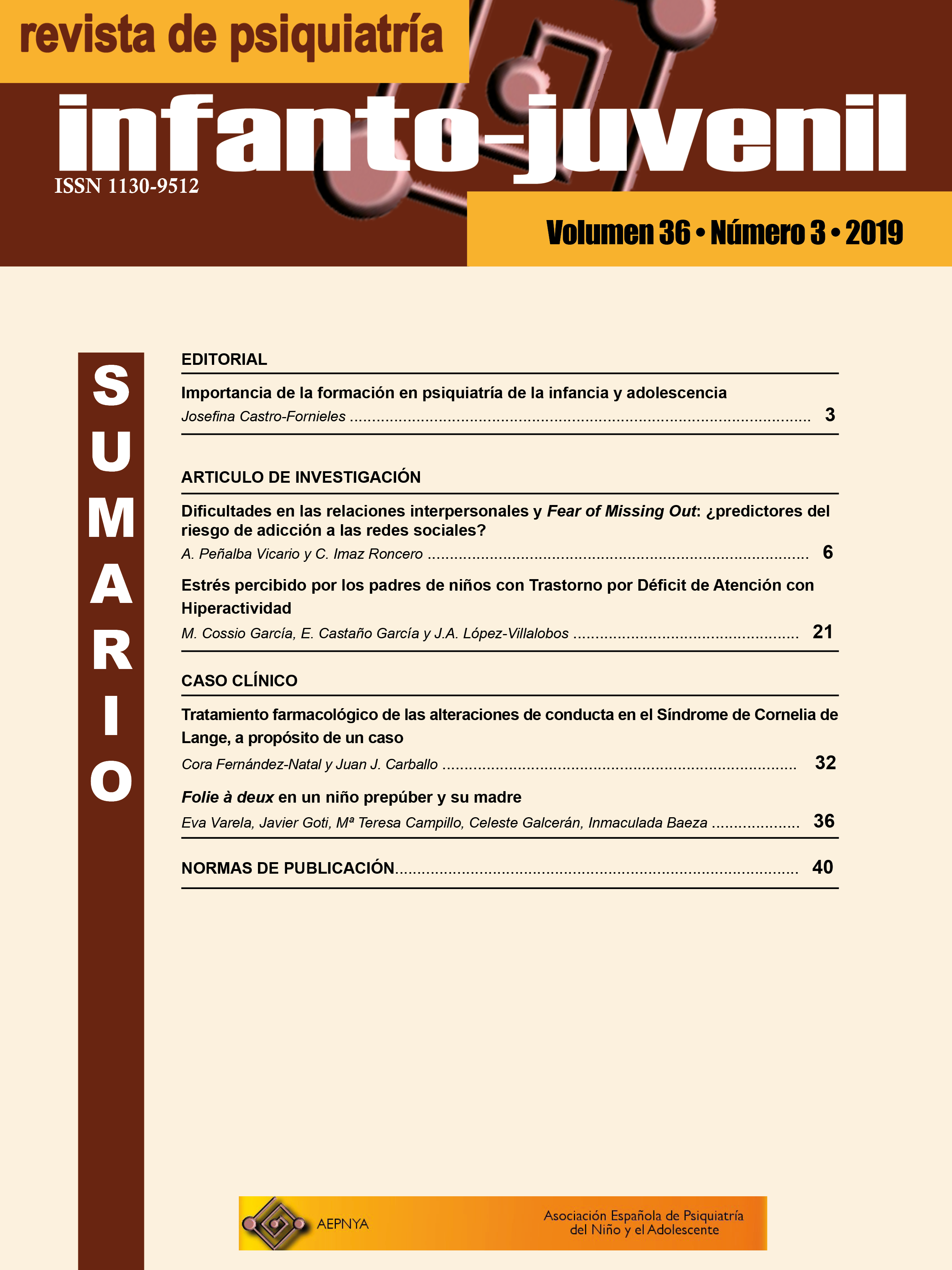Folie à deux in a prepuberal child and his mother
Downloads
Published
How to Cite
Issue
Section
DOI:
https://doi.org/10.31766/repsij.v36n3a5Keywords:
Induced psychosis, shared psychosis, folie à deux, prepuberal childAbstract
Shared Psychotic Disorder (DSM-5) or Induced Delusional Disorder (ICD-10), traditionally known as “folie à deux”, is a rare condition, probably under-diagnosed due to the serious social isolation and lack of insight that characterizes these patients. Some case reports and reviews have been published about this disorder, showing that the majority of the relationships are within the nuclear family with married or common-law couples being the most frequent. There are very few documented cases involving an induced partner younger than 18 years of age. We describe one case of a mother-son dyad, followed by a brief discussion based on the literature.
Downloads
References
Enoch D, Ball H. Síndromes raros en psicopatología. 1 ed. Madrid: Ed Triacastela; 2007
Arnone D, Patel A, Ming-Yee G. The nosological significance of Folie à Deux: a review of the literature. Ann Gen Psychiatry. 2006; 8:5-11. https://doi.org/10.1186%2F1744-859X-5-11
Ilzarbe D, Vigo L, Ros-Cucurull E, Baeza I, Sugranyes G. A case of folie à trois induced by a child. J Clin Psychiatry. 2015; 76: e119. https://doi.org/10.4088/JCP.14cr09295 DOI: https://doi.org/10.4088/JCP.14cr09295
Vigo L, Ilzarbe D, Baeza I. Banerjea P, Kyriakopoulos M. Shared psychotic disorder in children and adolescents: a systematic review. Eur Child Adol Psychiatry. 2019 Dec; 28: 1555-66. https://doi.org/10.1007/s00787-018-1236-7. DOI: https://doi.org/10.1007/s00787-018-1236-7
Zillessen KE, Trott GE, Warnke A. Induced delusional disorder in childhood and adolescence. Z Kinder Jugendpsychiatr Psychother. 1996; 24:117-126. DOI: https://doi.org/10.1017/S1352465800017380
Reif A, Pfuhlmann B. Folie a Deux versus genetically driven delusional disorder: case reports and nosological considerations. Comp Psychiatry. 2004; 45:155-160. https://doi.org/10.1016/j.comppsych.2003.09.004 DOI: https://doi.org/10.1016/j.comppsych.2003.09.004
Dodig-Ćurković K, Curkovic M, Degmecic D et al. Shared psychotic disorder (“folie a deux”) between mother and 15 years old son. Coll Antropol. 2008; 32:1255-8.
Shiwach RS, Sobin PB. Monozygotic twins, folie à deux and heritability: a case report and critical review. Med Hypotheses. 1998;50: 369-374. DOI: https://doi.org/10.1016/S0306-9877(98)90207-9
Lerner V, Greenberg D, Bergman J. Daughter-mother folie à deux: immigration as a trigger for role reversal and the development of folie à deux. Isr J Psychiatry Relat Sci. 1996; 33:260-4.
Çuhadaroğlu Çetin F. Folie à famille and separation-individuation. Eur Child Adolesc Psychiatry. 2001; 10:194-199. https://doi.org/10.1007/s007870170026 DOI: https://doi.org/10.1007/s007870170026









 © 2021 AEPNyA Todos los derechos reservados
© 2021 AEPNyA Todos los derechos reservados
